So, I promised pictures, no?
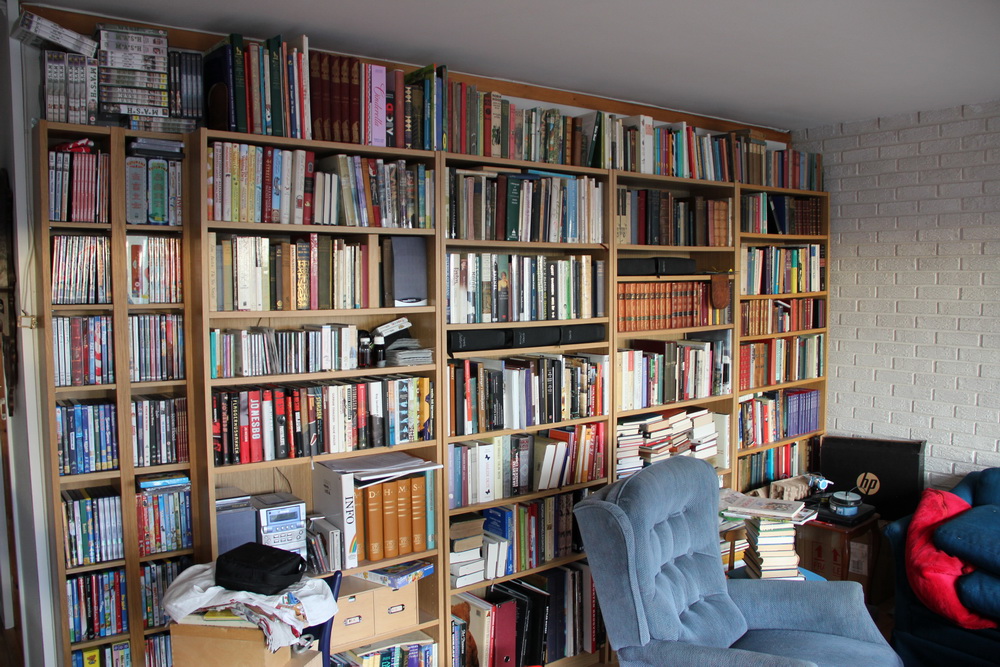
To the left are two Bennos containing dvds, mostly children’s since that’s what we need to have readily available. What precicely we’re going to do with the rest of our dvd collection we have not decided. taking up space in the Billys are our stereo and our cd collection. At some point I suppose we’ll go all digital, in the meantime they need to stay.
You’ll notice some books are just stuffed in whereever, this will probably not be rectified until we get shelves on that wall you can see on the right there.

And at the bottom, a somewhat miscellaneous bunch.
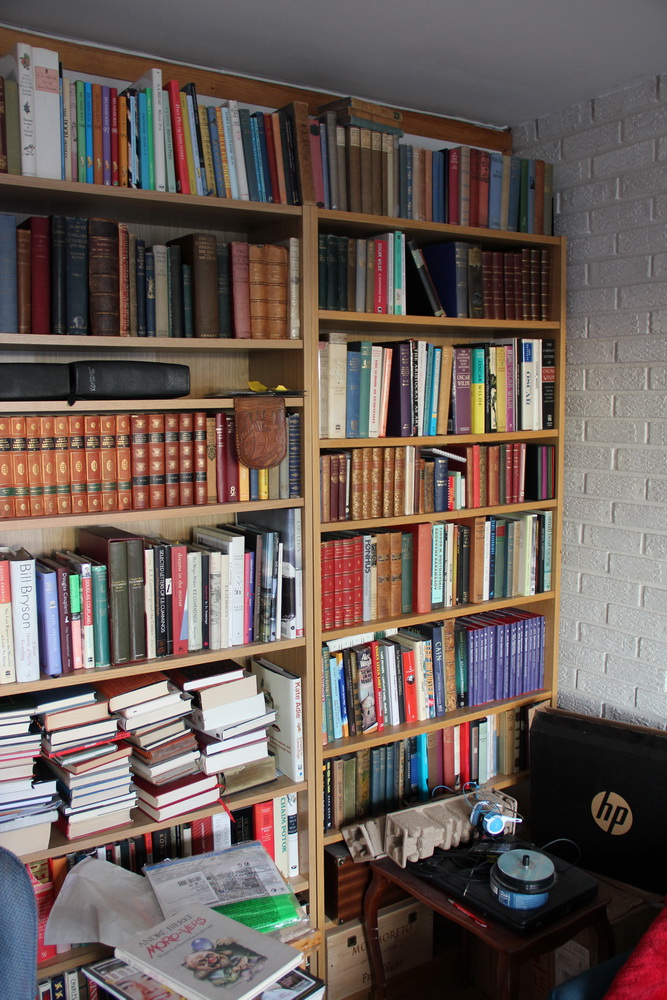
Below that books-about-books and Wildeania. A few collected works (Hamsun, Kielland and Fønhus among the old editions, those purple ones on the right there are Bjørneboe). And at the very bottom, two ineffectively used shelves, one containing a humidor, the other an old wine box with who knows what inside. And at the front Bjerke’s Moro-vers is resting on top of another pile of books I couldn’t quite find room for…

The husband remembered the name of the shallower bookcases: Bestå. With Innreda extra shelves (they only come with four each, which is ridiculous). Five 60 cm wide and one 30 cm wide to fill the wall as near as possible.
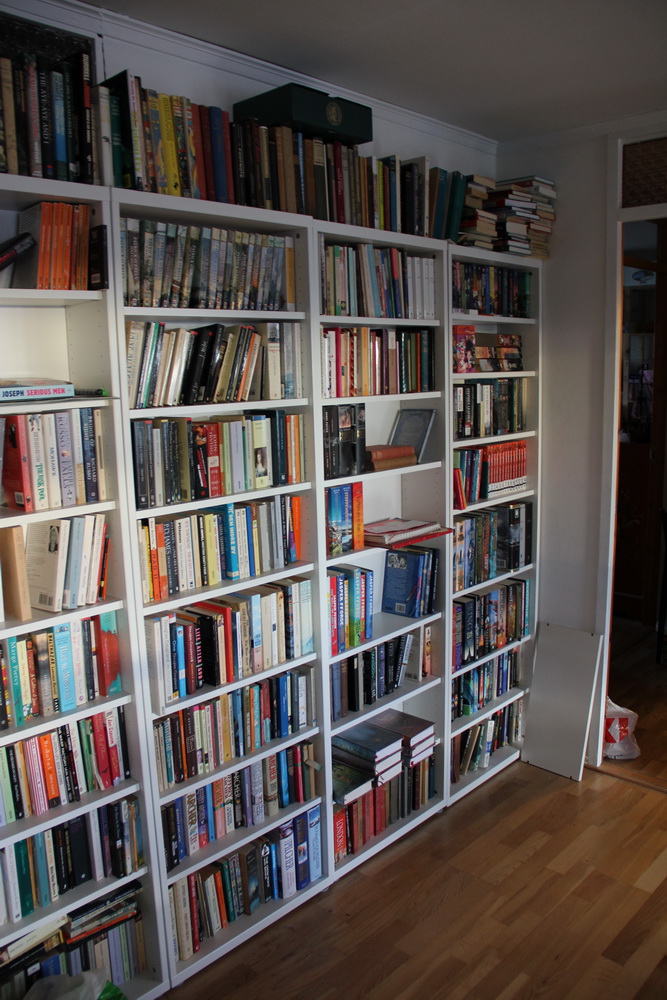
On top of the shelves my collection of Gerald Durrell’s books, a few by Håkon Mielche, more books-about-books, and a couple of collections of letters or diaries.
And the travelogues need sorting, I see. So does the non-fiction below. On top are some to-be-reads, they need a better place, but for now, this is where they live.

Though the bookcase on the left has allsorts – poetry at top, then Harry Potter (one of our sets, the others(!) have not emerged from boxes yet), then Jean M. Auel, then Jasper Fforde sharing with Bing & Bringsværd, then a few odd paperbacks then fairy tales in editions too tall for this particular shelf and lastly, at the bottom, mostly Baroness Orczy’s Scarlet Pimpernel books…
Sayers and Wodehouse go well together, don’t you think? McCall Smith is partnerless as of yet as I suspect he’ll need more room, what with being so prolific (you may have noticed some hardbacks a bit earlier on). Kate Atkinson and Richard Russo go well together in my head, Marian Keyes just happened to fit – specewise – in the middle there. Though I guess I should move her down, she’d sit better with L. M. Montgomery and Helen Fielding, methinks.
I may add some more pictures once we’ve got all the boxes opened and sorted.
Now you’ve seen mine, will you show me yours?
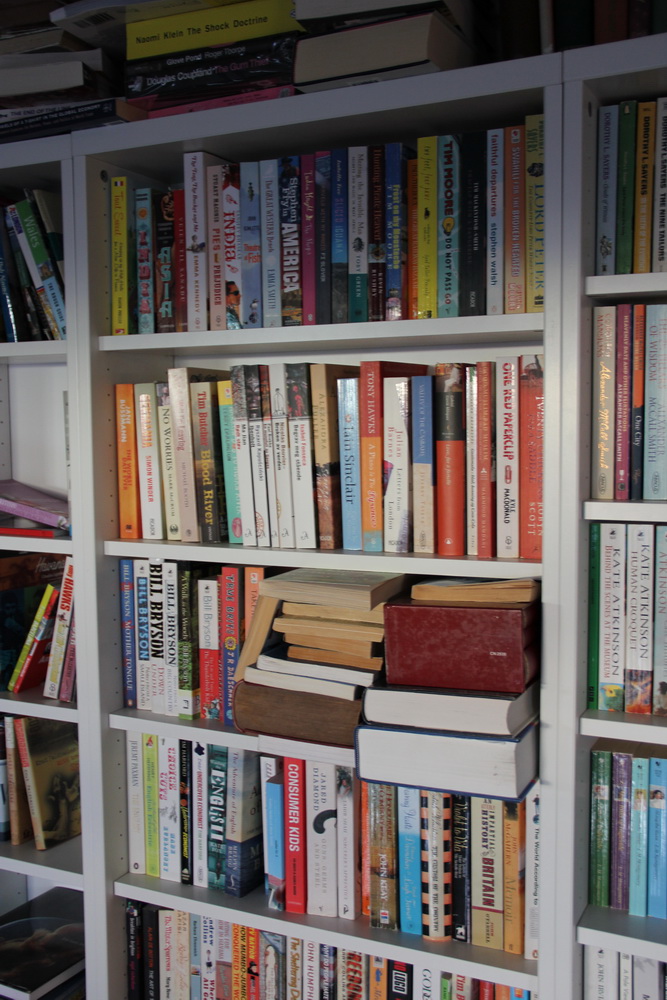
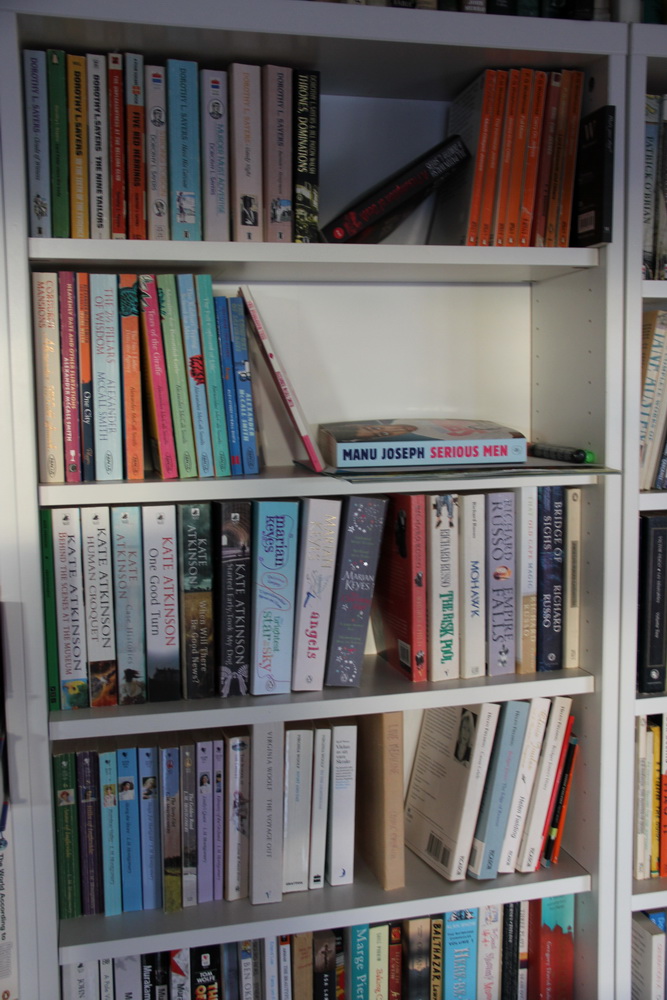
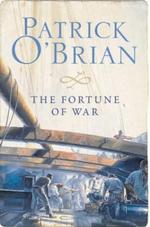
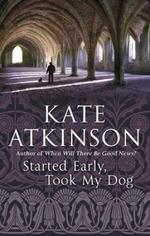 Having gotten my hands on Started Early, Took My Dog, I obviously had to start it as soon as possible.
Having gotten my hands on Started Early, Took My Dog, I obviously had to start it as soon as possible.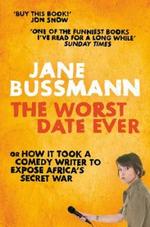
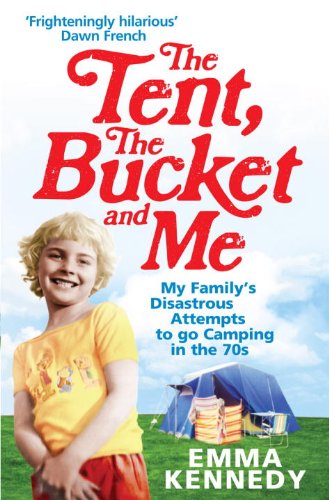 The Tent, the Bucket and Me was an obvious buy when I found it in London a year and a half ago. For some reason it’s been languishing on a shelf since then, until it grabbed my attention when I was looking for a book to bring on the aforementioned long weekend in Dublin. It turned out to be a good and a bad choice.
The Tent, the Bucket and Me was an obvious buy when I found it in London a year and a half ago. For some reason it’s been languishing on a shelf since then, until it grabbed my attention when I was looking for a book to bring on the aforementioned long weekend in Dublin. It turned out to be a good and a bad choice.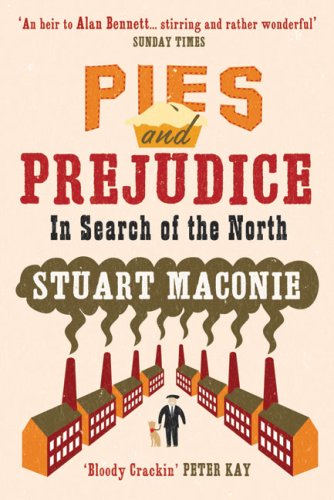 I found Pies and Prejudice – In Search of the North by Stuart Maconie in the newly extended English language section of one of the lokal bookshops (Norli på Nordre, om noen av mine norske lesere lurer). To my surprise, and glee, they now have a proper section for non-fiction, covering two whole book cases. I celebrated by buying this book, and I am very glad I did. The Times – according to the blurb on the cover – called Maconie «The new Bill Bryson» in their review, and I think they might be on to something.
I found Pies and Prejudice – In Search of the North by Stuart Maconie in the newly extended English language section of one of the lokal bookshops (Norli på Nordre, om noen av mine norske lesere lurer). To my surprise, and glee, they now have a proper section for non-fiction, covering two whole book cases. I celebrated by buying this book, and I am very glad I did. The Times – according to the blurb on the cover – called Maconie «The new Bill Bryson» in their review, and I think they might be on to something.